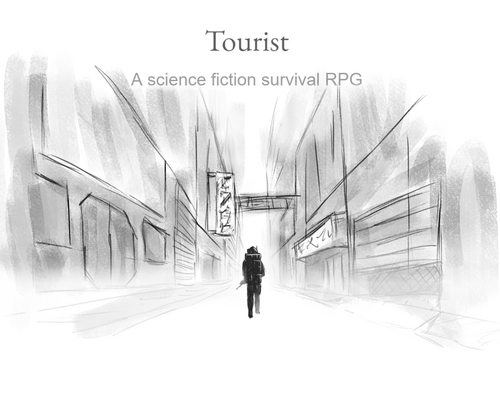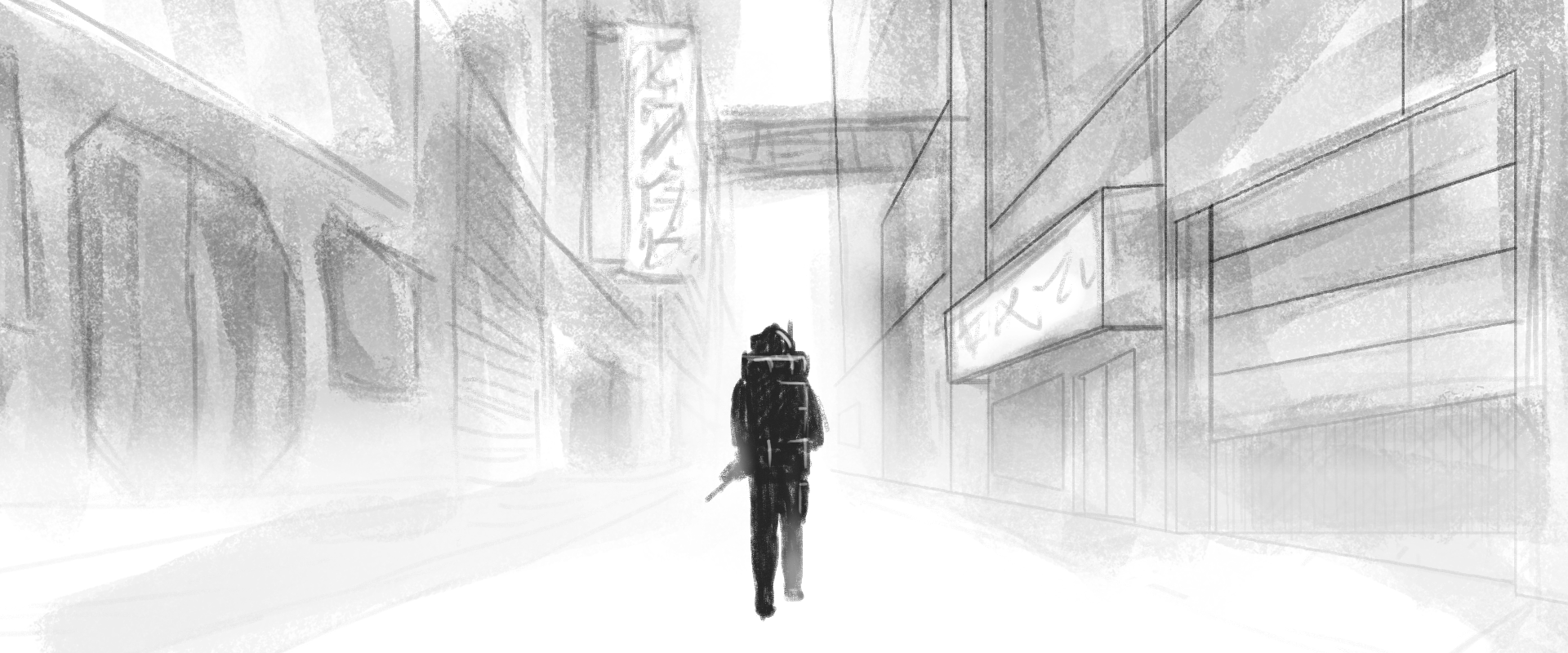Psavrosth Diary 3: Travel

Howdy,
Not much rambling to do for this one, just wanted to post something. So, here is my initial write-up of travel and random encounter rules for your consideration. After some additional thought, I decided to leave out some of the mechanics and specific travel procedures I initially considered, such as procedures for navigation/getting lost and assigning party roles (pointman/navigator/etc) until I can get some playtesting in and try them out. I intend to start with the rather simple system below and add onto it as I start to notice significant gaps during play.
---
Travel and Exploration
On Psavrosth, the only available form of transportation is often a tourist’s own two feet. Beyond the logistical problems with operating and maintaining a grav-car, shuttle, or other vehicle on the world, they are virtually guaranteed to draw unwanted attention from automated defenses, bandits, or countless other threats, assuming they are even capable of navigating the twisted and hostile environment. As a result, much of a tourist’s movement throughout a region is likely to be done on foot.
Travel Rate
Characters can march at a rate of 5 kilometers an hour. If traveling carefully or moving through particularly unfavorable terrain, this is reduced by half. A character can march at this pace for 6 hours in a day without exceptional difficulty. However, marching while heavily encumbered, at greater speed, or for longer distances is likely to cause fatigue.
Random Encounters
While traveling through the region, exploring a zone, or hunkering down in an intact building for some rest, there is a chance the PCs will stumble upon the unexpected (or it may stumble upon them). For each hour the PCs spend traveling or exploring, the GM should make a secret roll to determine if such a random encounter occurs. This is done by rolling a single 10-sided die and comparing the result to the likelihood of an encounter occurring in the given area or zone.
As a rule of thumb, a 2-in-10 (20%) chance of an encounter occuring should be considered standard, with particularly quiet zones having a 1-in-10 (10%) chance, and more active ones as high as a 5-in-10 (50%) chance.
The GM should also check to see if a random encounter occurs each time the PCs do something particularly noisy or likely to draw attention from anyone or anything nearby, such as engaging in a gunfight, detonating an explosive, or waving bright lights around at night.
A random encounter could be anything from another group of tourists passing by or bandits lying in ambush, to a hidden supply cache, to a corrosive fog suddenly sweeping in. When an encounter occurs, the GM should roll on the zone’s random encounter table to determine who or what the PCs encounter. Depending on the fictional context, it may be appropriate for the encounter to be selected at the GM’s discretion, rather than rolling on a table.
Encounter Distance
Encounter Distance is the distance in meters at which an encounter occurs; essentially the distance at which the encounter “scene” begins. The distance may be determined by rolling 2d10 and multiplying the result by 10. Thus, a typical random encounter will occur at a distance of between 20 to 200 meters. This distance may be reduced by half in particularly dense terrain or low-visibility environments, or may be doubled (or more) in particularly open terrain.
Determining Initiative
If the encounter involves other people, creatures, robots, or similar which may spot, hear, or otherwise detect and react to the PCs, an opposed Observation Test should be made between each party to determine which side (if any) is caught unawares. Characters which are traveling cautiously or lying in wait reduce the difficulty of any such Observation Test they take by one step and also increase the difficulty of the opposing party’s Observation Test by a single step.
The side which wins the opposed test becomes aware of the other party first and potentially has an opportunity to “get the drop” on them, while they are, for the moment, unaware. They may even use the opportunity to sneak away or hide, avoiding the other party entirely, who may never know an encounter took place.
If neither party succeeds on the opposed test, they simply stumble into each other or otherwise become aware of each others’ presence simultaneously. As with all skill tests, no opposed Observation Test need be made if the circumstances of the encounter make the result obvious.
Get Tourist RPG
Tourist RPG
Sci-fi RPG of scavengers looking for riches on a ruined world.
| Status | In development |
| Category | Physical game |
| Author | Toastmortem |
| Genre | Role Playing, Survival |
| Tags | d100, Dice, Sandbox, Sci-fi, Tabletop, tabletop-role-playing-game, Tabletop role-playing game |
More posts
- Psavrosth Diary 6: Some More TablesJul 09, 2024
- Tourist Version 0.4May 29, 2024
- Psavrosth Diary 5.5: Solo Playtest in DetailMar 27, 2024
- Psavrosth Diary 5: Solo Playtest JournalFeb 18, 2024
- Psavrosth Diary 4: Some TablesDec 10, 2023
- Tourist Version 0.3Nov 18, 2023
- Psavrosth Diary 2: Campaign Layers and ExplorationOct 22, 2023
- Psavrosth Diary 1: Updates, Shotguns, and FatigueSep 04, 2023

Leave a comment
Log in with itch.io to leave a comment.